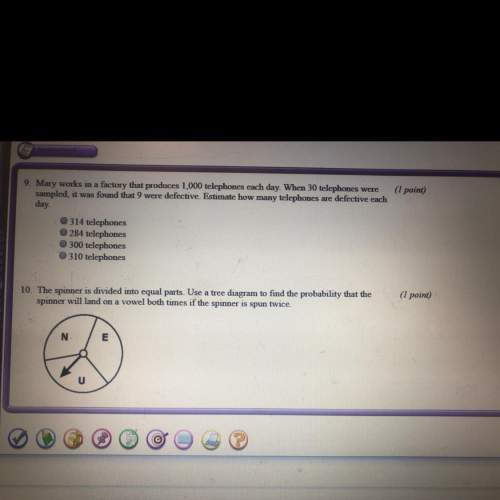
Mathematics, 17.07.2020 18:01 shortyyashaun
every chemical element goes through natural exponential decay, which means that over time its atoms fall apart. the speed of each element's decay is described by its half-life, which is the amount of time it takes for the number of radioactive atoms of this element to be reduced by half. the half-life of the isotope beryllium-11 is 14 seconds. a sample of beryllium-11 was first measured to have 800 atoms. after t seconds, there were only 50 atoms of this isotope remaining.

Answers: 1


Other questions on the subject: Mathematics

Mathematics, 20.06.2019 18:04, brendanhein1
Tina practice piano for 15 hours last month and 45 hours this month use multiplication to write a statement comparing me i was tina practice during the two months use addition to write a statement comparing the hours tina practice during the two months
Answers: 1

Mathematics, 21.06.2019 13:30, hannahelisabeth19
One expression below in undefined, and the other expression has a well defined value. which expression is undefined and explain why it has no value. which expression is defined? what is the value of that expression and how do you know? what is a different expression using a trig inverse function that is also undefined?
Answers: 1

Mathematics, 21.06.2019 17:20, dixonmckenzie1429
Asap describe the transformations required to obtain the graph of the function f(x) from the graph of the function g(x). f(x)=-5.8sin x. g(x)=sin x. a: vertical stretch by a factor of 5.8, reflection across y-axis. b: vertical stretch by a factor of 5.8,reflection across x-axis. c: horizontal stretch by a factor of 5.8, reflection across x-axis. d: horizontal stretch by a factor of 5.8 reflection across y-axis.
Answers: 1

Mathematics, 21.06.2019 18:30, leannhb3162
The bake stars picked 907 apples last weekend at a local orchard they made caramel apples and sold them in the bakery in trays of 6
Answers: 1
You know the right answer?
every chemical element goes through natural exponential decay, which means that over time its atoms...
Questions in other subjects:



History, 14.10.2019 21:30






Mathematics, 14.10.2019 21:30

Health, 14.10.2019 21:30




